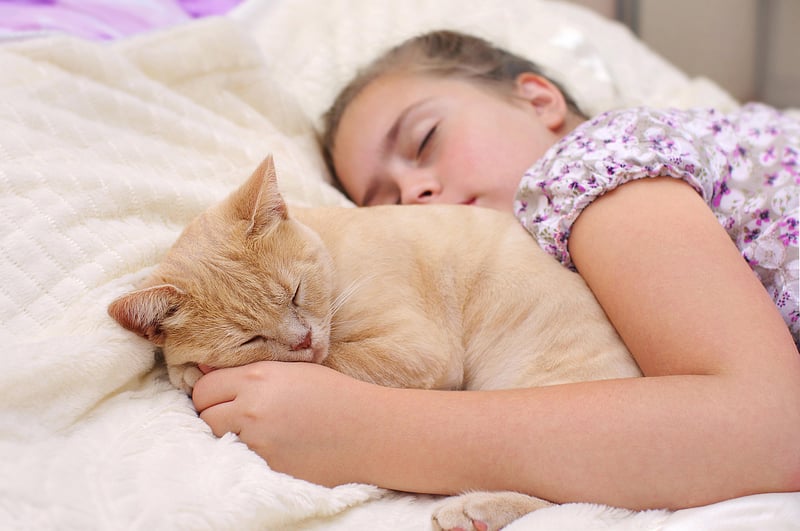Get Healthy!

- Cara Murez
- Posted December 8, 2022
Special Human-Cat Bond May Have Started 10,000 Years Ago
That special link you may have with a purring, four-legged friend has been going on between the species for millennia, new research shows.
The human-cat relationship was probably forged over a shared interest in rats more than 10,000 years ago, investigators say. As farming became a way of life, cats served as ancient pest control, killing rodents and making a bond with people that continues to this day.
For the study, the researchers from the University of Missouri studied these relationships using DNA, finding that rodents were the catalyst for the bond that led humans to bring cats with them on their travels.
The research team collected and analyzed DNA from cats in and around the Fertile Crescent, the area of the Middle East surrounding the Tigris and Euphrates rivers, where humans first switched from hunter-gatherers to farmers.
The team also studied cat DNA throughout Europe, Asia and Africa, comparing nearly 200 different genetic markers.
"One of the DNA main markers we studied were microsatellites, which mutate very quickly and give us clues about recent cat populations and breed developments over the past few hundred years,"said Leslie Lyons. She is a feline geneticist and professor of comparative medicine in the university's College of Veterinary Medicine.
"Another key DNA marker we examined were single nucleotide polymorphisms, which are single-based changes all throughout the genome that give us clues about their ancient history several thousands of years ago,"Lyons added in a university news release. "By studying and comparing both markers, we can start to piece together the evolutionary story of cats."
Lyons said the study strongly supports the theory that cats were likely first domesticated only in the Fertile Crescent before migrating with humans all over the world.
After feline genes were passed down to kittens throughout generations, the genetic makeup of cats in western Europe is now far different from cats in southeast Asia, a process known as "isolation by distance."
"We can actually refer to cats as semi-domesticated, because if we turned them loose into the wild, they would likely still hunt vermin and be able to survive and mate on their own due to their natural behaviors,"Lyons said. "Unlike dogs and other domesticated animals, we haven't really changed the behaviors of cats that much during the domestication process, so cats once again prove to be a special animal."
Studies like this support Lyons' broader research goal of using cats as a biomedical model to study genetic diseases that impact both cats and people. This includes polycystic kidney disease, blindness and dwarfism.
"Comparative genetics and precision medicine play key roles in the 'One Health' concept, which means anything we can do to study the causes of genetic diseases in cats or how to treat their ailments can be useful for one day treating humans with the same diseases,"Lyons said.
Lyons has worked for many years to develop comprehensive feline DNA databases, including genome sequencing from cats all around the world.
Along with colleagues, Lyons in 2021 found that the cat's genomic structure is more similar to humans than nearly any other non-primate mammal.
"Our efforts have helped stop the migration and passing-down of inherited genetic diseases around the world, and one example is polycystic kidney disease, as 38% of Persian cats had this disease when we first launched our genetic test for it back in 2004,"Lyons said. "Now, that percentage has gone down significantly thanks to our efforts, and our overall goal is to eradicate genetic diseases from cats down the road."
The findings were published online recently in the journal Heredity.
More information
The U.S. National Library of Medicine has more on polycystic kidney disease.
SOURCE: University of Missouri, news release, Dec. 5, 2022

